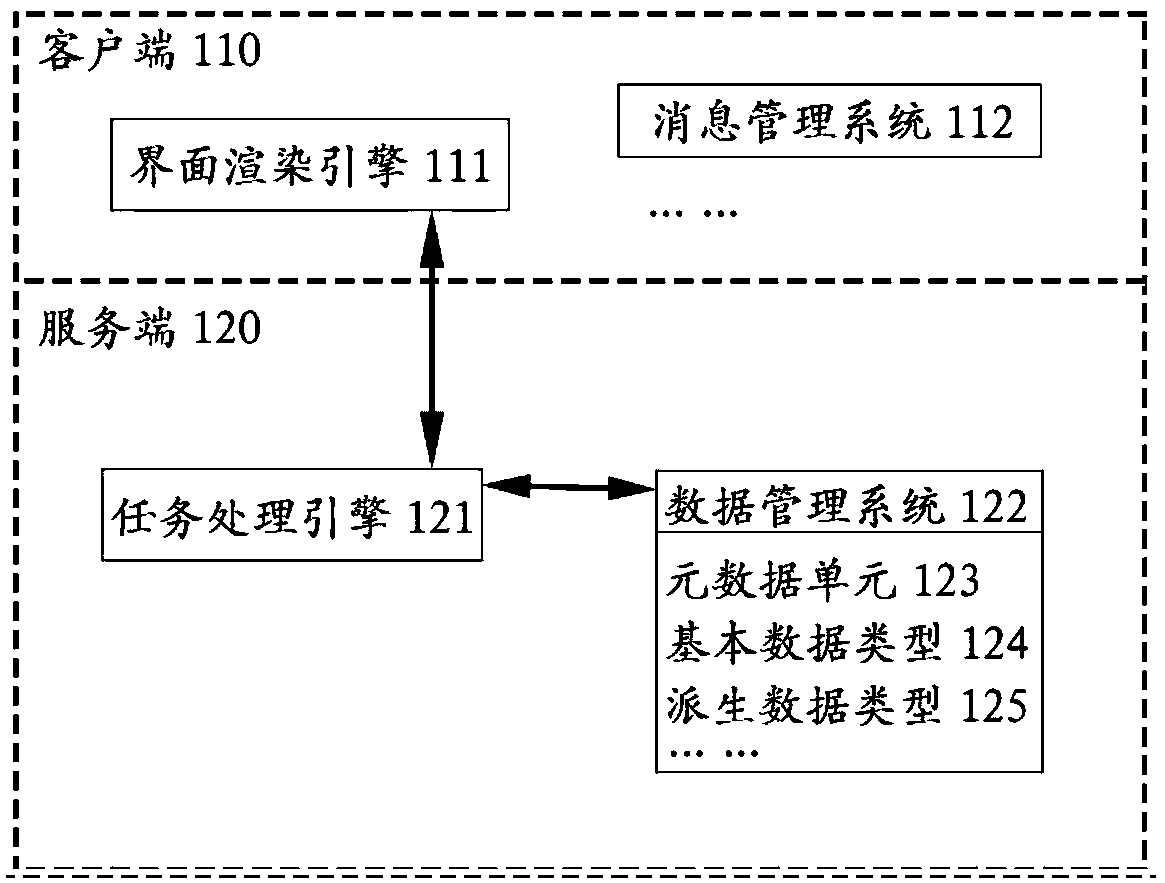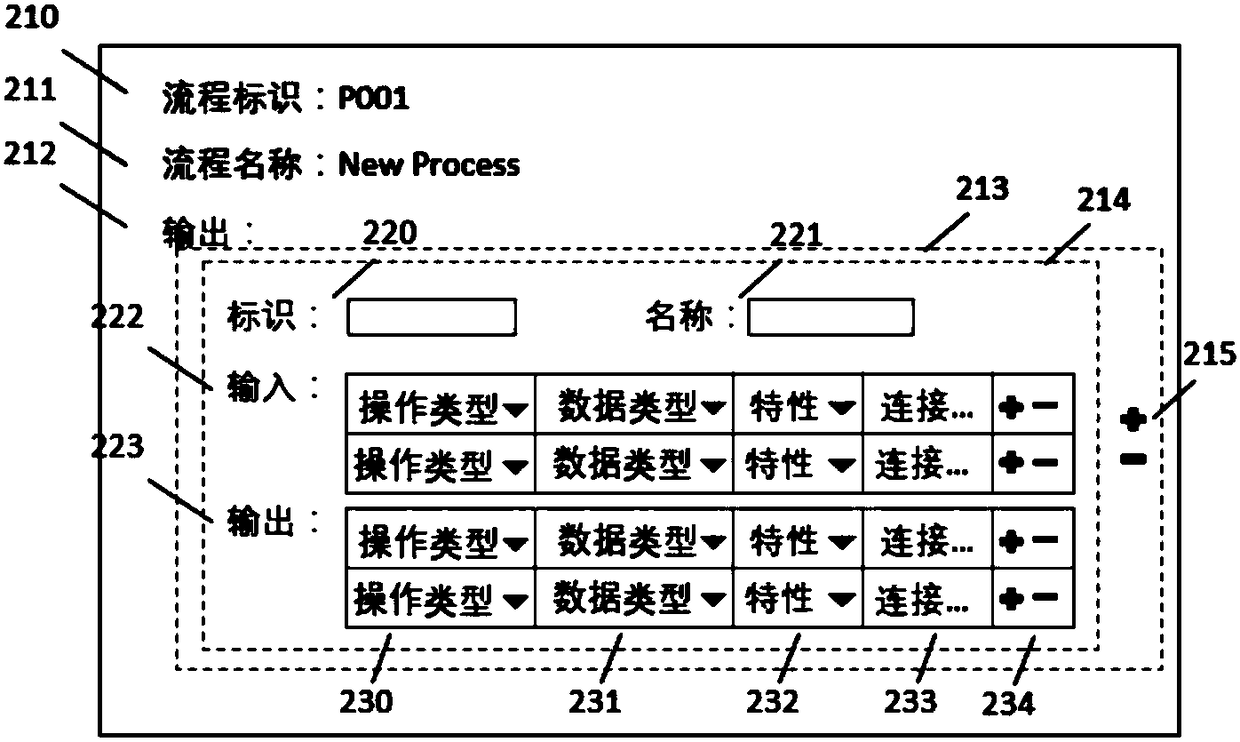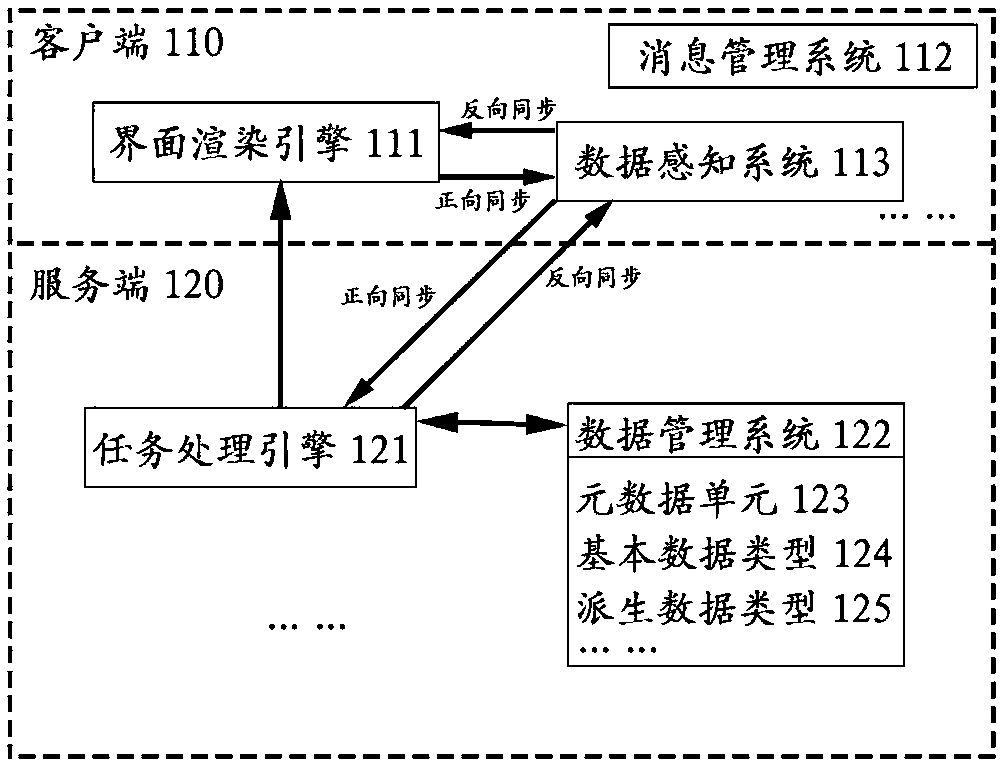Management informationization method and management informationization system implemented on basis of input and output semantization
An input-output and data management system technology, applied in the field of generalized management based on input-output semantics, can solve problems such as limited flexibility and high technical threshold for daily business
- Summary
- Abstract
- Description
- Claims
- Application Information
AI Technical Summary
Problems solved by technology
Method used
Image
Examples
Embodiment 1
[0128] The system described in this embodiment at least includes an interface rendering engine 111, a task processing engine 121, and a data management system 122, in which a metadata unit 123 and a type data unit are stored. The setting of the type data unit is for more convenient calling and retrieval of the metadata unit. Install the database management system 122 in the server host program. Create a typed (TYPE) table in the data management system 122, and insert the following data in the table:
[0129] ID
name
PARENT_ID
META_ID
A
type of data
Null
Null
B
text
A
1
C
name
B
2
D
describe
B
3
P
number
A
18
R
Boolean
A
30
T
date
A
17
E
Activity
A
4
F
process
E
12
G
attribute type
Null
Null
H
Multivalued
G
Null
I
register
G
Null
J
operation type
Nu...
Embodiment 2
[0153] In embodiment 2, step reaches as described in embodiment 1 figure 2 Steps, the user can press the following steps on the interface of creating a new process Figure 7 Enter the interface as shown, where the input value of the identification 220 is "P003", the input value of the name 221 is "DescribeProcess", and the input 222 sets the semantic expression of the first line: the operation type parameter 230 input in the first line is "reference", and the data type Parameter 231 is "process", and other parameters have no input value or default value, output 223 also sets a line of semantic expression: the operation type parameter 230 of the first line output is set to "new", and the data type parameter 231 is set to basic data type Derived type "Description", other parameters have no input value or default value. Its execution and implementation process are the same as in Embodiment 1, and finally get the following Figure 8 In the interface, the result of the first lin...
Embodiment 3
[0155] The following describes how to generate a new metadata unit through the property type "register" in conjunction with Embodiment 3. As in Example 1, the steps are achieved as figure 2 steps shown, followed by Figure 9 As shown, edit the logo 220 to "P004", edit the name 221 to "Register Risk", input 222 without inputting any semantic expressions, and output 223 to set four semantic expressions: the operation type parameter 230 output in the first line is set to "new ", the data type parameter 231 is set to "object" type and a new name "risk" is set for the output item, the characteristic type parameter 232 is set to "registration"; the operation type parameter 230 of the second line output is set to "new", Data type parameter 231 is set to "text" type and a new name "risk description" is set for the output item, and the output item is indented by one unit, indicating that the output item is a sub-item of the previous output item, and other parameters are not selected ...
PUM
 Login to View More
Login to View More Abstract
Description
Claims
Application Information
 Login to View More
Login to View More - R&D
- Intellectual Property
- Life Sciences
- Materials
- Tech Scout
- Unparalleled Data Quality
- Higher Quality Content
- 60% Fewer Hallucinations
Browse by: Latest US Patents, China's latest patents, Technical Efficacy Thesaurus, Application Domain, Technology Topic, Popular Technical Reports.
© 2025 PatSnap. All rights reserved.Legal|Privacy policy|Modern Slavery Act Transparency Statement|Sitemap|About US| Contact US: help@patsnap.com



